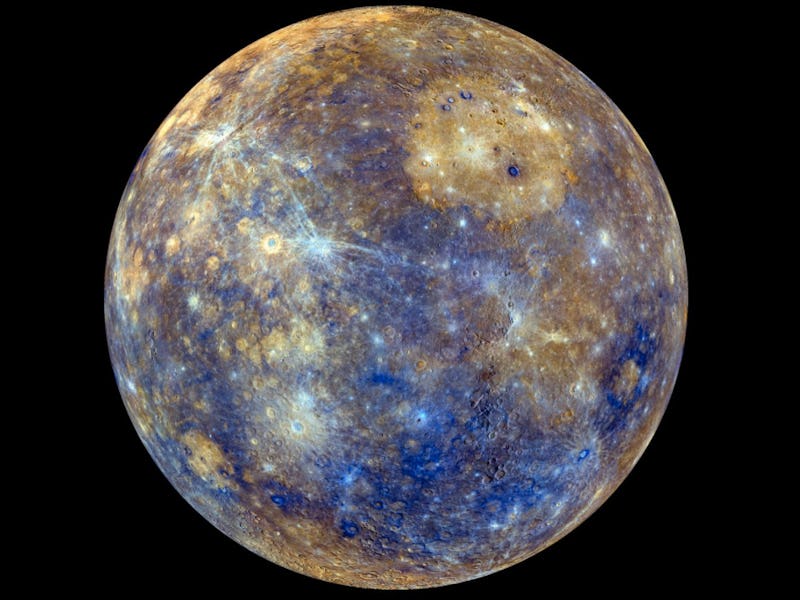The Best Time to See Mercury All Year is Early Tuesday Morning
Here's how to spot it.

Skywatchers who stay up very late — or get up early — will get an optimal look at Mercury Tuesday morning. That’s when the planet will be at its greatest western elongation, giving the astronomy-inclined the best chance to see it. At 18 degrees west of the sun, it will as far as it gets from the brightness of our star, giving it a chance to shine on its own.
As it will be rising just before the sun this month, you’ll want to look slightly low above the eastern horizon about 30 to 45 minutes before sunrise to catch the innermost planet. It will resemble something like a bright star, and will be visible with the naked eye. To see what time the sun rises where you are, try this Sunrise and Sunset Calculator.
Good views of Mercury are actually guaranteed until September 16 in that pocket of 30 minutes before sunrise. After the 12th, Mercury and Mars will also start moving towards each other, and as Mars is pretty dim, using Mercury as a guide can be helpful. You’ll still need a telescope, but on September 16 Mercury and Mars will be about 0.3 degree apart in our night sky.
A spectral view of planet Mercury composed from data captured by the Mercury Atmosphere and Surface Composition Spectrometer (MASCS) instrument aboard NASA’s Messenger spacecraft. The images give a better idea of the planet's rugged terrain.
It takes Mercury a mere 58.65 days to orbit its neighbor the sun. Fun fact: due to this rapid orbit, Mercury was once thought to be two planets by the ancient Greeks. When it was in the evening sky, it was known as Hermes, and in the morning, it was thought to be a different planet, named Apollo. According to Space.com, it was the philosopher Pythagoras, sometime around fifth century B.C., who figured out that the two planets were in fact just one. Hermes then became Mercury under the Romans.